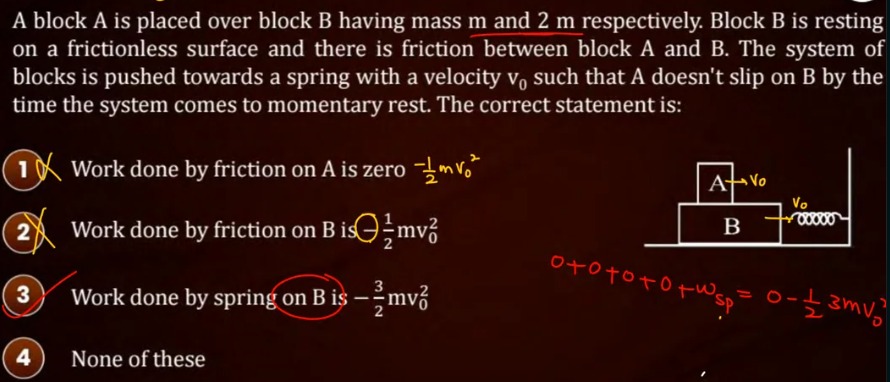Question
Question: A block A is placed over block B having mass m and 2 m respectively. Block B is resting on a frictio...
A block A is placed over block B having mass m and 2 m respectively. Block B is resting on a frictionless surface and there is friction between block A and B. The system of blocks is pushed towards a spring with a velocity v0 such that A doesn't slip on B by the time the system comes to momentary rest. The correct statement is:

Work done by friction on A is zero −21mv02
Work done by friction on B is −21mv02
Work done by spring on B is −23mv02
None of these
Work done by spring on B is −23mv02
Solution
We start by noting that when block A “does not slip” on block B the friction between them is static. In problems with pure rolling or non‐slipping constraints the static friction force acts only to enforce the constraint and, importantly, does no work (its point of application does not “slide” relative to the body). Thus the work done by friction on block A (and likewise on block B) is zero.
The entire initial kinetic energy of the two–block system
Ki=21mv02+21(2m)v02=23mv02,is eventually stored as spring potential energy when the system comes momentarily to rest – the spring (an external agent on block B) does work
Wspring on B=−23mv02.Thus among the given alternatives only statement 3 is correct.
